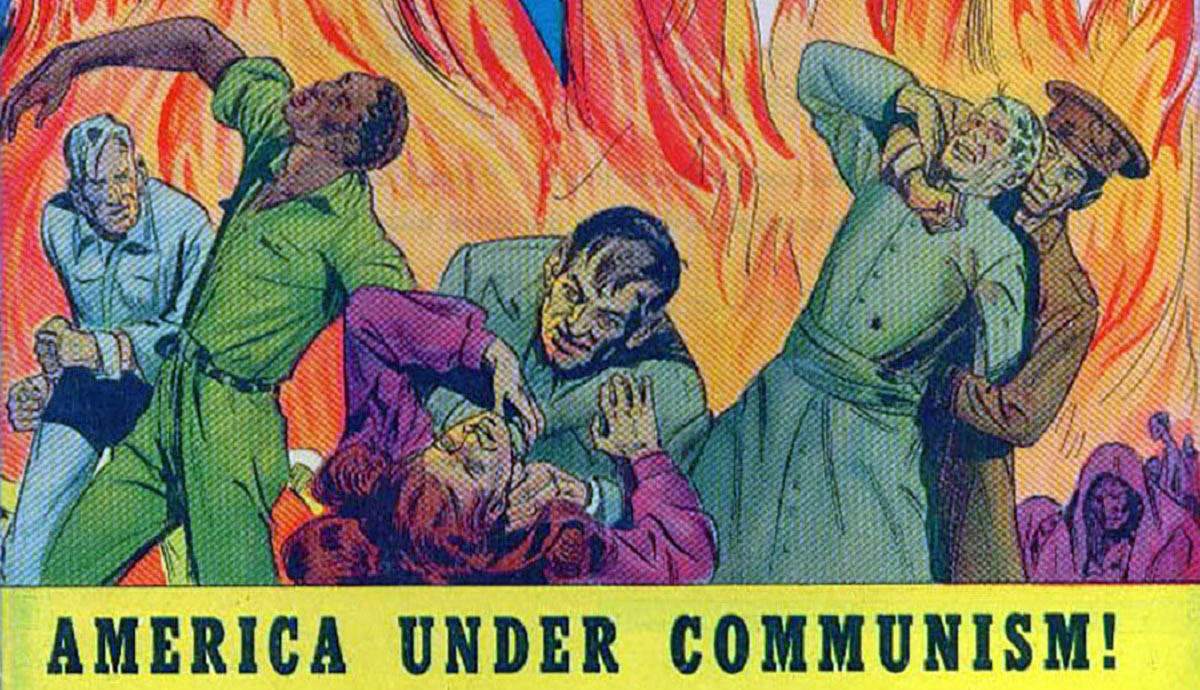The Red Scare political cartoon depicted widespread fear and paranoia about communism in the United States during the Cold War. This cartoon effectively portrayed the anxiety and suspicion towards communist influence.
During the early 20th century, the Red Scare was a period of intense anticommunist hysteria in the United States. This fear was fueled by the rise of communism in Russia and the fear of its spread to other parts of the world.
The political cartoon captured the tensions and paranoia of the time, depicting the widespread suspicion and hostility towards anything associated with communism. By examining this iconic piece of political satire, we gain insight into the social and political climate during this tumultuous period in American history. The Red Scare political cartoon serves as a powerful reminder of the impact of fear and propaganda on society.
Origin Of the Red Scare
The Red Scare was a period of anti-communist hysteria that swept through the United States in the early 20th century. The fear of communism and radicalism led to a crackdown on individuals or groups who were perceived as being sympathetic to socialist ideas or the Russian Revolution. The Red Scare was fueled by a combination of factors, including immigration, labor disputes, and the impact of World War I.
Immigration And Labor Disputes
The influx of immigrants, particularly from Eastern and Southern Europe, sparked concerns about the spread of socialist and anarchist ideas. The labor movement, which was gaining momentum, also faced opposition from business leaders and government officials. The combination of these factors created a fertile ground for the rise of anti-communist sentiment.
Impact Of World War I
World War I further heightened the fear of communism in the United States. The Bolshevik Revolution in Russia and the formation of the Soviet Union added to the anxieties about the spread of communism on a global scale. The war also led to a climate of nationalism and suspicion, which contributed to the targeting of individuals or groups with leftist leanings.
Symbolism In Political Cartoons
In political cartoons, symbolism plays a crucial role in conveying complex ideas and capturing the essence of societal fears and anxieties. The utilization of symbols and metaphors in these cartoons allows artists to communicate powerful messages in a concise and impactful manner. When exploring the Red Scare political cartoons, it becomes evident that the use of symbolism was foundational in shaping public perceptions and attitudes toward the perceived threat of communism. This section will delve into the symbolism employed in these cartoons, highlighting the visual representations of fear and the strategic utilization of propaganda techniques.
Visual Representations Of Fear
Red Scare political cartoons prominently feature visual representations of fear, often employing symbols that evoke a sense of dread and apprehension. The use of ominous imagery, such as menacing figures representing communism, clenched fists, and looming shadows, effectively conveyed the perceived threat posed by the ideology. Furthermore, these cartoons frequently incorporated symbols of destruction and chaos, such as flames, explosions, and collapsing structures, to instill a sense of urgency and imminent danger in the viewers.
Utilization Of Propaganda Techniques
In addition to visual symbolism, Red Scare political cartoons also utilized propaganda techniques to amplify their message. The strategic incorporation of exaggerated facial expressions, stark color contrasts, and caricatured depictions of political figures served to demonize the perceived enemy and reinforce the notion of an imminent threat. Additionally, the use of sensationalized captions and bold textual elements aimed to provoke emotional responses and sway public opinion in alignment with the prevailing anti-communist sentiment.
Artists And Their Influence
Artists have always played a crucial role in shaping public opinion and influencing political discourse through their powerful visual medium. During the Red Scare era, political cartoonists utilized their talents to critique government policies and offer a unique perspective that resonated with the public. Their ability to encapsulate complex ideas into compelling imagery contributed significantly to the shaping of public opinion and challenging the status quo.
Contribution To Public Opinion
The Red Scare political cartoons were instrumental in shaping public opinion by depicting the societal impact of the government’s anti-communist crusade. Through evocative imagery and symbolism, artists conveyed the fear and paranoia experienced by ordinary citizens, thereby fostering empathy and understanding among the masses. Their work served as a mirror reflecting the sentiments of the public and shedding light on the human cost of political hysteria.
Critique Of Government Policies
Artists used their creative prowess to offer a scathing critique of government policies during the Red Scare. By caricaturing political figures and institutions, they highlighted the absurdity and injustices perpetuated by the authorities. Their cartoons exposed the erosion of civil liberties and the rampant infringement on individual rights, sparking critical discourse and mobilizing opposition against the repressive measures enacted by the government.
Legacy Of Red Scare Cartoons
The Red Scare political cartoons of the 20th century continue to leave a lasting legacy, shaping and influencing contemporary media and perpetuating political ideologies. These thought-provoking illustrations served as a reflection of the fears, anxieties, and suspicions during a time of heightened political tension. Their impact continues to be felt today, as their provocative imagery and messages have seeped into the collective consciousness, shaping public perception and influencing political discourse.
Influence On Contemporary Media
These cartoons have had a profound impact on contemporary media, serving as a historical reference point for artists, cartoonists, and satirists. The bold and confrontational visual language employed in the Red Scare cartoons has become a template for political commentary in various forms of media, including editorial cartoons, satirical TV shows, and meme culture. The use of exaggerated symbolism and caricature to convey political messages continues to be a powerful tool in shaping public opinion and challenging authority.
Perpetuation Of Political Ideologies
The Red Scare cartoons perpetuated and reinforced political ideologies of the time, creating a climate of fear and suspicion that persisted long after the Red Scare era. The stark imagery and portrayal of the “enemy within” served to demonize perceived threats and solidify the ideological divisions of the era. This legacy can be seen in the contemporary political landscape, where similar tactics are employed to instill fear and suspicion, perpetuating a cycle of political polarization and division.

Credit: www.thecollector.com
Frequently Asked Questions Of Red Scare Political Cartoon
What Is The Red Scare Political Cartoon About?
The Red Scare political cartoon depicts the fear of communism in the post-World War I era, often portraying communists as a threat to American society and values. It was a tool used to rally public opinion against communist ideologies.
Who Created The Red Scare Political Cartoon?
The most notable creator of the Red Scare political cartoons is Dr. Seuss. Before his fame as a children’s book author, he was a political cartoonist who produced several influential pieces during the Red Scare era.
How Did The Red Scare Political Cartoon Impact Society?
The Red Scare political cartoon created a climate of fear and suspicion, leading to the repression of individuals and groups that were seen as sympathetic to communist ideologies. It contributed to a sense of paranoia and division in American society at the time.
Conclusion
In understanding the significance of the Red Scare political cartoon, we gain insights into historical propaganda’s impact. The cartoon’s use of fear and suspicion reflects the societal anxieties of the time, shedding light on the power of visual communication in shaping political narratives.
By examining and analyzing such visual artifacts, we enhance our comprehension of historical events and their lasting repercussions.

